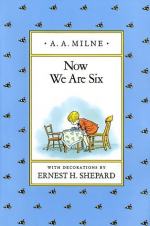|
This section contains 6,408 words (approx. 22 pages at 300 words per page) |

|
SOURCE: "Winnie The Pooh Through a Feminist Lens," in The Lion and the Unicorn, Vol. 11, No. 2, 1987, pp. 34-50.
In the following essay, Stanger uses ideas about the semiotic or preverbal world—as contrasted with the symbolic or verbal one—in order to examine the Pooh books from a feminist perspective.
I the Popularity of the Stories
Pooh Bear has always had his fans. Winnie-the-Pooh, which sold in record numbers from the time it was first printed in 1926, sold 1,005,000 copies by 1975. These numbers can be partially explained by the fact that while Pooh was published as a children's book, it was often taken over for adult reading.1 Alison Lurie makes this point in "Back to Pooh Corner,"
My friends and 1 not only read Milne's books over and over as children; all through high school and college we went on speaking his language, seeing people and events in his terms...
|
This section contains 6,408 words (approx. 22 pages at 300 words per page) |

|


